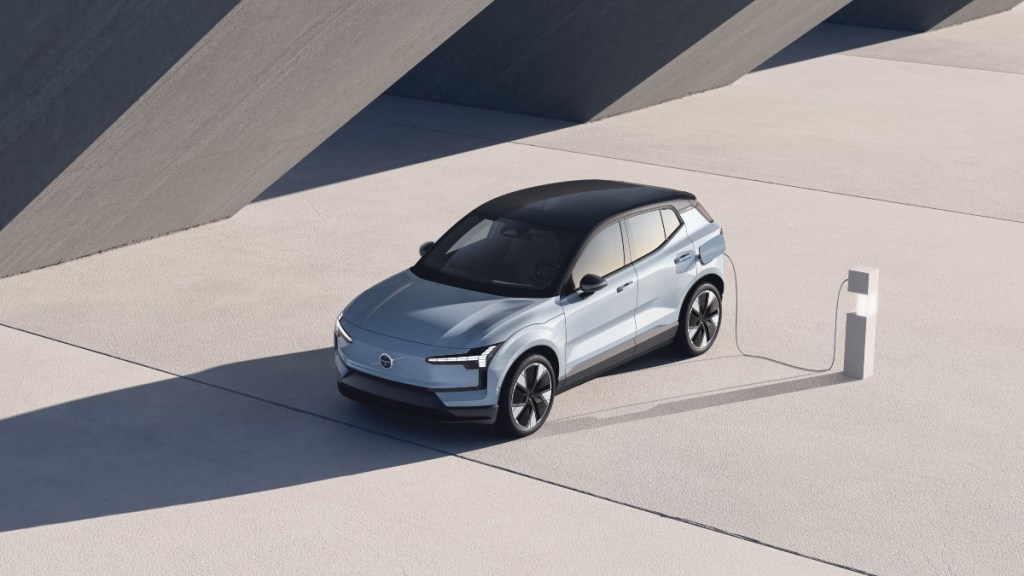It is no big secret that Volvo is looking to completely electrify its lineup by the end of this decade. The Swedish brand is one car manufacturer which is still steadfast in its commitment of achieving net carbon neutrality by 2040.
The carmaker recently unveiled that the upcoming EX30 electric SUV possesses the smallest carbon footprint of any fully electric Volvo car to date. According to Volvo’s life cycle assessment (LCA), it has a total carbon footprint of 23 tonnes per 200,000 km which is approximately 60 percent less than the petrol-powered XC40.
The carbon footprint report identifies the key contributing materials and processes to the car’s emissions. Exclusively focused on greenhouse gas (GHG) emissions, the report covers the car’s life cycle, starting with the extraction and refining of raw materials and ending with the car’s end of life.
Using wind-based electricity to charge the EX30 substantially reduces the carbon footprint compared with global or European electricity mixes by approximately 42 percent and 22 percent respectively. This underlines the need to accelerate investments in renewable energy infrastructure globally for electric cars to reach their full climate potential.
Volvo EX30 launch in India
Recently, the Swedish automaker announced that Volvo will bring both its entry-level and flagship electric SUVs— EX30 and EX90— to India in 2025. Both models will be brought to the country via the CKD (completely knocked down) route. The EX30 is the smallest electric car in Volvo’s global lineup. It is based on parent company Geely’s SEA platform, which is also shared with Jeep Avenger EV.
Volvo offers the EX30 in three different powertrain options. There are two battery packs on offer— a 51kWh lithium-iron-phosphate (LFP) and a 69kWh nickel-manganese-cobalt (NMC) unit— returning a peak single-charge range of 426 km and 443 km, respectively. With the top-spec Twin Motor Performance variant, the EX30 gets a dual-motor setup with a combined output of 423 bhp.
As for performance, the EX30 can do a 0-100 kmph sprint in just 3.4 seconds. The LFP battery can be charged at up to 13 4kW, while the NMC models can accept charge at up to 153 kW.
